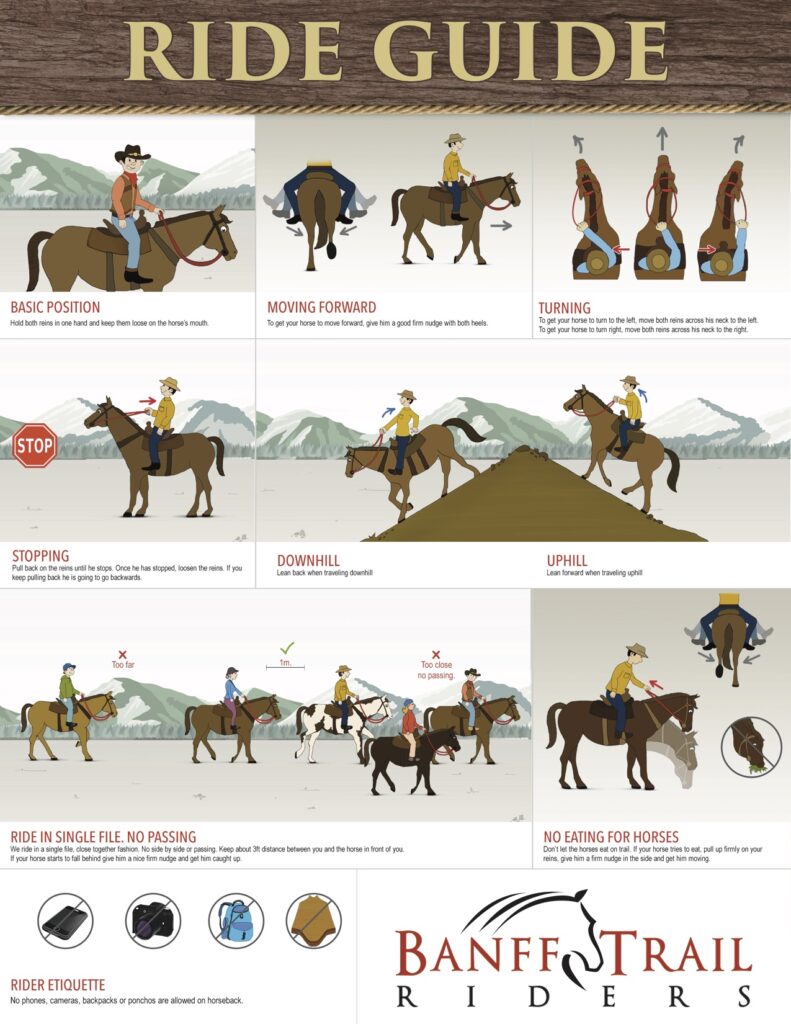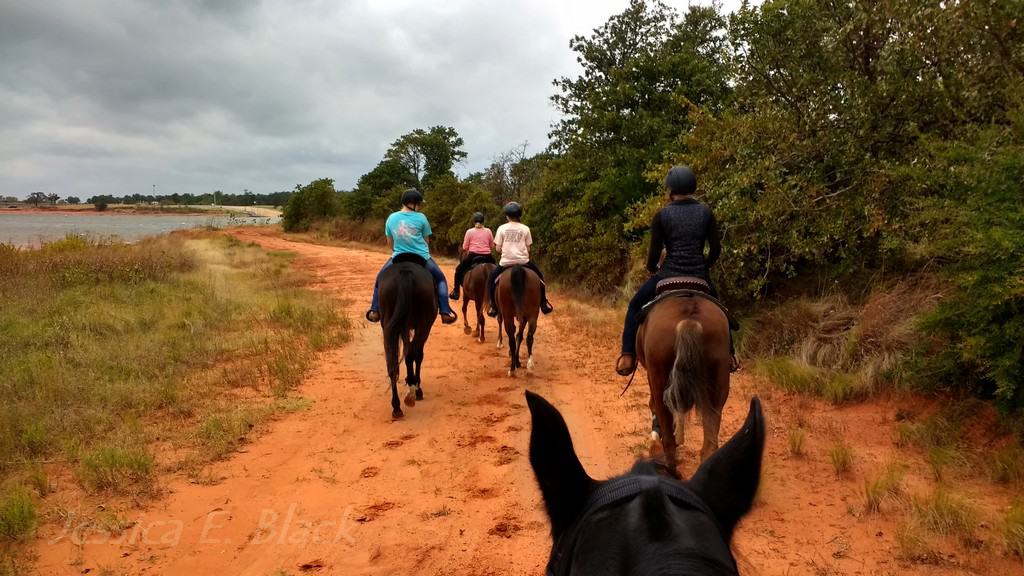In this article, you will learn about horseback riding etiquette and the do’s and don’ts that you should keep in mind when engaging in this activity. Whether you are a beginner or an experienced rider, understanding proper etiquette is essential for a safe and enjoyable riding experience.
When it comes to horseback riding etiquette, there are several important do’s and don’ts to consider. Firstly, always be respectful to your horse and treat them with kindness and care. It is also crucial to follow any rules or guidelines set by the riding facility or trail you are riding on. Additionally, be mindful of other riders and give them space when necessary. On the other hand, it is important to refrain from reckless behavior, such as galloping or spooking other horses. By following these guidelines, you can ensure a positive and respectful experience for both yourself and others on the trail.
Horseback Riding Etiquette: Do’s and Don’ts
Horseback riding is not just about hopping on a horse and taking a leisurely jaunt. It’s a sport that requires proper etiquette to ensure the safety and enjoyment of all riders. Whether you’re a beginner or a seasoned rider, it’s essential to adhere to certain do’s and don’ts while on horseback. In this article, we’ll explore the importance of horseback riding etiquette and provide you with some guidelines to follow.

The Importance of Horseback Riding Etiquette
Horseback riding is not only a fun and thrilling activity but also a responsibility. It’s important to remember that you’re not just riding a horse; you’re sharing the trails with other riders and encountering the natural environment. By following proper etiquette, you can ensure a safe and enjoyable experience for everyone involved.
Etiquette is about respect – respect for other riders, respect for the horses, and respect for the trails and natural surroundings. It’s also about safety, as proper etiquette helps prevent accidents and injuries. By following the do’s and don’ts of horseback riding etiquette, you contribute to a harmonious and positive riding experience for all.
Do’s of Horseback Riding Etiquette
-
Greet and Communicate with Other Riders: When encountering other riders on the trail, it’s polite to greet them and exchange a friendly nod or hello. Effective communication is crucial, especially when passing or overtaking other riders. Use clear and concise verbal cues to let them know your intentions and ensure a safe distance between horses.
-
Respect the Trail and Natural Environment: Horseback riding takes place in beautiful natural surroundings, and it’s essential to respect and preserve these environments. Stay on designated trails and avoid veering off into protected areas. Don’t disturb wildlife or vegetation, and be mindful of leaving behind any trash or litter. Leave the trail as you found it, or even better, cleaner.
-
Follow Instructions and Guidelines: If you’re riding at a stable or on guided trail rides, it’s important to follow the instructions and guidelines provided by the staff. They are there to ensure your safety and the well-being of the horses. Pay attention to any specific rules or regulations and adhere to them accordingly.
-
Be Mindful of Your Horse’s Behavior: Your horse’s behavior can greatly impact the overall safety and enjoyment of the ride. Pay attention to their mood, energy level, and any signs of discomfort or stress. Be aware of appropriate distance and spacing between horses to prevent potential conflicts. This can help create a more harmonious and enjoyable riding experience for everyone.
-
Practice Safety Measures: Safety should always be a top priority when horseback riding. Wear a properly fitted helmet and appropriate riding gear, such as boots with a small heel and gloves for better grip. Maintain a secure and balanced position in the saddle, and always be vigilant of your surroundings. Practice safe riding techniques and be prepared for any unexpected situations that may arise.

Don’ts of Horseback Riding Etiquette
-
Don’t Overtake Other Riders in a Dangerous Manner: It’s important to be patient when overtaking other riders on the trail. Don’t rush past them in a dangerous or reckless manner, as this can startle the horses and lead to accidents. Wait for an appropriate opportunity to pass, ensuring a safe distance between the horses.
-
Don’t Leave Trash or Litter Behind: Leave no trace behind when horseback riding. Avoid littering the trails with wrappers, bottles, or any other waste. Pack out what you bring in and dispose of it properly. This helps maintain the beauty and cleanliness of the trails for future riders to enjoy.
-
Don’t Ride Too Close to Other Horses: Respecting personal space is crucial when riding in a group or encountering other riders on the trail. Avoid riding too close to other horses, as this may agitate or startle them. Maintain a safe distance to prevent accidents and allow each horse to feel comfortable.
-
Don’t Ignore Trail Signs and Regulations: Trail signs and regulations are put in place for a reason – to ensure the safety and well-being of riders and horses. Ignoring these signs can lead to accidents or damage to the environment. Pay attention to trail markers, speed limits, and any other regulations posted along the trail.
-
Don’t Use Abusive or Harsh Methods on Your Horse: Horses are intelligent and sensitive animals. Using abusive or harsh methods, such as excessive whipping or rough handling, not only compromises their well-being but also affects the overall riding experience. Treat your horse with kindness, respect, and proper training techniques to cultivate a bond based on trust and mutual understanding.
By following these do’s and don’ts of horseback riding etiquette, you contribute to a safer, more enjoyable, and harmonious riding experience. Respect for others, the environment, and the horses themselves is essential in maintaining a positive and nurturing atmosphere for all riders. So, saddle up and embrace the joy of horseback riding while demonstrating impeccable etiquette along the way.
10 Frequently Asked Questions about Horseback Riding Etiquette
-
Q: How should I greet other riders while on the trail? A: It’s polite to greet other riders with a friendly nod or hello as you pass them. Effective communication is also important to ensure a safe distance between horses.
-
Q: Is it okay to leave trash or litter behind on the trail? A: No, it’s important to leave no trace behind and pack out any trash or litter. Keep the trails clean for the enjoyment of all riders and to preserve the natural environment.
-
Q: How should I approach overtaking other riders on the trail? A: Be patient and wait for an appropriate opportunity to pass. Rushing past other riders in a dangerous manner can startle the horses and lead to accidents.
-
Q: What should I do if my horse becomes agitated or stressed during the ride? A: Pay attention to your horse’s behavior and signs of discomfort or stress. Take a break if necessary, and be aware of appropriate spacing between horses to prevent conflicts.
-
Q: Are helmets necessary for horseback riding? A: Yes, wearing a properly fitted helmet is essential for your safety while horseback riding. It protects your head in case of a fall or accident.
-
Q: Can I ride too close to other horses? A: No, it’s important to respect personal space and maintain a safe distance between horses. Riding too close can agitate or startle other horses and lead to accidents.
-
Q: Is it important to follow trail signs and regulations? A: Yes, trail signs and regulations are in place to ensure the safety of riders and horses, as well as to preserve the environment. Ignoring them can lead to accidents or damage.
-
Q: How should I treat my horse while riding? A: Treat your horse with kindness, respect, and proper training techniques. Avoid using abusive or harsh methods that compromise their well-being and overall riding experience.
-
Q: Can I ride at any speed on the trail? A: It’s important to follow speed limits and ride at a safe pace on the trail. Maintain control over your horse and be mindful of other riders around you.
-
Q: What should I do if I encounter an unexpected situation on the trail? A: Stay calm, assess the situation, and react accordingly. Maintain control of your horse, communicate with other riders, and prioritize safety at all times.

